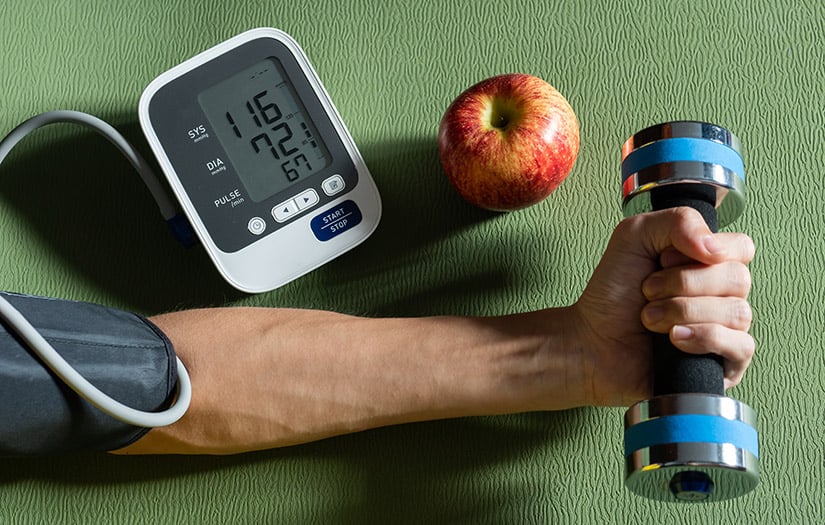If you have low blood pressure, or you are a personal trainer who is training clients with hypotension, this content is for you!
Consider also checking out the NASM personal training course online today and prepare yourself for many more specific training cases.
Conversely, if you or your client has high blood pressure, check out this resource on the DASH diet.
Question: What to Do When MY Low Blood Pressue Client is Dizzy After a Workout?
My question has to do with a client of mine with low blood pressure (90/60) She gets "lightheaded" during cardio workouts (i.e., group fitness kickboxing classes). Sometimes she feels like she is going to pass out. What precautions should I take with her?
Answer:
Don't take low blood pressure too lightly. Yes, in the vast majority of cases, it’s nothing to worry about. On the other hand, when your client feels dizzy and lightheaded, it means her brain isn't getting enough blood.
Since her blood pressure is already low, you should be particularly wary of othostatic hypotension, which most often occurs when moving from a lying or seated position to a standing position and post-exercise hypotension.
You should also be aware that the incidence of postural hypotension increases with age and has been linked to an increase the risk of falls and bone fractures in the elderly. As many as 20 percent of elderly people suffer postural hypotension.
Some symptoms of hypotension
- nausea
- dizziness
- unsteadiness
- fatigue/ weakness
- blurred vision
- cognitive impairment
Of course, one simple way to prevent this is by standing during the entire workout. (Read my article, “Get Off Your Rear.") You can also minimize elevation changes by performing all of your “floor” exercises together. Then take several minutes to move from lying on the floor to sitting on the floor to kneeling and finally to standing.
As I wrote in “Blood Pressure and Exercise,” post-exercise hypotension is normal and expected. Again, since your client already has low blood pressure, this can be a problem.
During an exercise session, contracting muscles help pump blood back to the heart. After the session, blood will tend to pool in the extremities leaving less blood in the heart. This causes a decline in cardiac output that causes BP to drop.
Also following a workout, blood vessels remain relatively dilated, which also lowers BP. In addition, since body temperature is higher after exercise, blood vessels near the surface of the skin dilate to help your body release heat.
The most dangerous time may be when your client is in the shower or sauna. High temperature environments will cause further decreases in blood pressure, so ask your client to rest as long as possible following the post-workout cool down before she takes a shower.
If she ever reports dizziness or light-headedness at the end of a session, don't let her leave your sight until you are sure she’s back to normal. You may also ask a colleague or another member to check up on your client in the locker room. This is when and where fainting is most likely to take place.
Tips for Clients with Low Blood Pressure
Drink more fluids - Fluids help keep blood volume at a normal level. Sports drinks, due to their higher levels of electrolytes like potassium and sodium, may be more beneficial than plain water in this case. Read more in Hydration: Through The Lens of Fitness
Salt - Adding salt to her diet can help increase fluid retention in the blood vessels which can normalize her blood pressure. See foods high in electrolytes (aka salts).
Smaller and more frequent meals - Large meals can shunt blood to the digestive system in may lower blood pressure in the short term.
Coffee - Research shows that 200-250 mgs of caffeine (or about two cups of coffee) can decrease postural hypotension.
Support hose - Support hose help reduce pooling of blood in the lower legs, which means there’’s more blood left in the upper body to maintain blood pressure.
As I always recommend, your first choice for exercise advice should come from your client’’s physician. Not only does this cover you legally, but it also shows both the physician and your client that you are concerned about her well being. You'll find that the client and the physician will then be great referral sources. It also enhances your credibility as a professional in the health care chain.
The physician will also be able to rule out conditions such as diabetes, cardiovascular disorders, alcoholism, neuropathy, central nervous system disorders and pregnancy, which can lead to changes in blood pressure.











